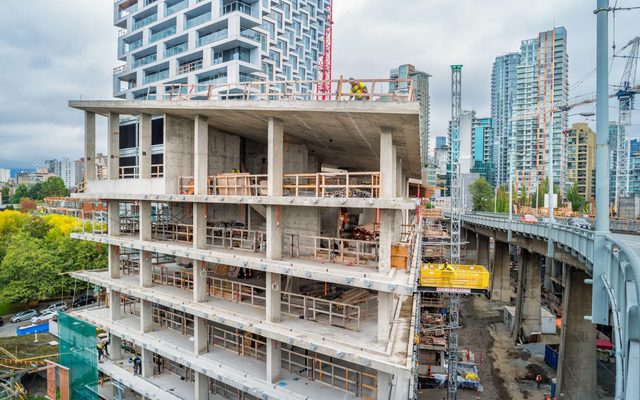- What The Commercial Real Estate Women Network’s convention wrapped up on Friday
- Why 1,400 attendees gathered in the city to discuss dealmaking and networking
- What next Multifamily, data centres and the uncertain market were all top concerns
The annual three-day Commercial Real Estate Women Network’s convention wrapped up in Vancouver on Friday afternoon.
This year’s convention saw nearly 1,400 attendees for the networking and dealmaking event, which was jam-packed with panel discussions and breakout rooms tackling industry issues.
While the consensus among attendees was that markets likely will remain slower than usual, even as interest rates are reduced, many other issues and ideas surfaced during the convention.
Here are key takeaways from the event.
Development challenges don’t end at the border
Attendees from the U.S. and Canada remarked on the difficulties they face in multifamily construction and the general cost of housing.
Jennifer Podmore Russell, executive vice president of real estate and development of Nch’ḵay̓ Development in Vancouver, said construction and labour costs plus the cost of debt have created challenges.
“The fundamental challenge that I see that we’re all grappling with is the cost of housing,” Podmore Russell said. “If you listen to stories from Boston or L.A. or Vancouver or Toronto, we’re hearing a really common thread around the costs of it as well as on the time to deliver.”
Projects are no more complex than they have been in the past, but they are more “complicated” to execute, with costs being passed on to others.
She added that the challenges around housing have become a political item, contributing to the pressures on the industry.
Multifamily in North America is seeing growing demand
Neither Canada nor the U.S. has enough multifamily housing to reach demand.
The lack of supply plus constraints related to financing mean young people in many parts of the continent won’t be able to jump into a single-family house for their first home.
This is putting demand on the multifamily sector, with much of that demand being on rentals.
In Canada, 20% of all housing starts are apartment rentals, Podmore Russell said. The construction is happening as the country’s existing rental stock ages.
“The majority of our housing supply for rental apartments is older,” she said. “So, 74% of Canadian rental buildings are older than 1980.”
Challenges at North American ports present opportunity in industrial real estate
As labour action and other logistical issues hang over North American ports, companies are looking at how they can avoid hardship in the event of work stoppages.
This includes diversifying which ports they may have goods shipped to.
Curtis Spencer, chief executive of real estate logistics firm IMS Worldwide, said such issues could have some investors looking into the transload business – transferring shipments from one form of transport to another – in places such as Vancouver.
“I’d be building buildings that are 1,000 feet long by 200 feet wide and [have] enough truck parking area to have three times the truck parking than I do have doors,” Spencer said of opportunities in the city.
He added that in Ontario, facilities to store bulk receipts of goods before shipping them individually to the U.S. also could be constructed.
Data centres will become even more of a hot item
One of the most engaging discussions during CREW Network’s convention was on global trends in data centres, an area garnering great interest from those still learning about the asset class.
Artificial intelligence is accelerating data-centre demand, with the need and requirement increasing more than 10 times in the coming years, said one attendee. Meanwhile the availability of power and fibre are selling points for drawing data centres to any region, she said.
“The other real driver is incentives that the states are offering from a tax incentive standpoint,” she said. “Those usually parallel with the power companies that are driving towards trying to be data centre-friendly.”
Others in the room noted their investment clients were asking more frequently for information on data centres.




